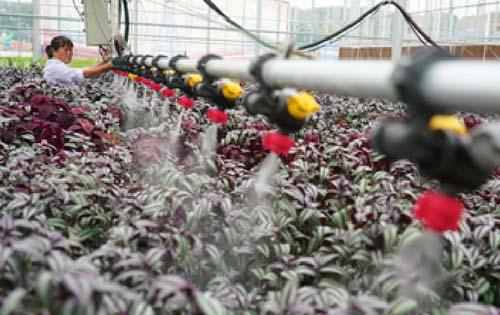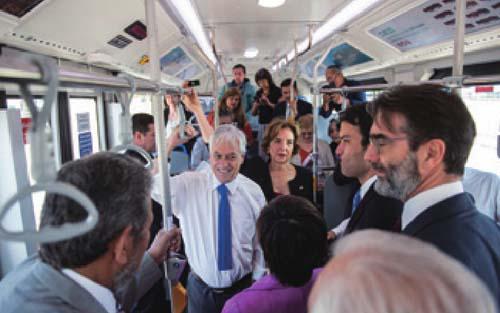DRIVING FACTORS
By Peter Walker


Chinas economic growth since reform and opening up began in 1978 is nothing short of miraculous. The “cultural revolution” (1966-76) left China with a struggling economy, a disorganized government structure, a broken educational system and a starving population. The country used new technologies to completely overhaul its agricultural model and manufacturing capabilities.
How did China do it? It relied on fi ve key components.
A disciplined, top-down corporate governance model
What late Chinese leader Deng Xiaoping needed was an overhaul of the agriculture sector to dramatically increase productivity and output, and to build a competitive manufacturing sector by leveraging new technologies and low-cost labor. In order to do this, Deng introduced a governance model mirroring that used by major global corporations to drive performance.
This corporate governance model has a few main elements. The first is a strong leader and the second is a small team of highly talented and experienced senior offi -cials to oversee efforts and advise the leader. For China, this is the Standing Committee of the Political Bureau of the Communist Party of China Central Committee. The third is a consensus-driven leadership willing to compromise among leaders who collectively work with one vision. This decision-making model is in sharp contrast to the adversarial multi-party system used in most Western countries.
The fourth major piece is a talent pool of the best and brightest. Under Confucian values, which are deeply embedded in Chinas history and culture, many of the countrys most gifted aspire to government work.
Chinas top talent pool is managed through a performance-driven meritocracy with ongoing performance reviews, with advancement also tied to peer respect. This keeps everyone focused on meeting the objectives of the plan and taking corrective actions when needed.
Chinas governance model uses a fiveyear planning process built on extensive input from expert leaders, within and outside the government, and refined through debate and discussion. The high-level plan is then tailored to specifi c situations in each ministry, province, major city and industry sector, complete with aggressive economic objectives, backed by precise operating plans. Finally, performance is driven by clear accountabilities, performance metrics and variance analyses, and is reinforced by incentives.
This remarkably simple and well-tested model helps large corporations succeed globally. It has also allowed Chinas economy to grow and develop in the past 40 years on a scale never seen before in a country its size.
Integrative problem resolution across all important economic levers
While major corporations can apply this model to what they control, many important performance levers are controlled by governments. These include laws, taxes, trade agreements, fi scal policy, infrastructure, immigration, education and healthcare. Chinas model applies the fi ve-year planning process across the entire economy, allowing for close coordination and a cohesive plan of action. While the government cant directly control private enterprises, it can signifi cantly infl uence their actions indirectly through these levers.
Mechanisms to ensure the government responds to peoples needs
The U.S. electoral democracy gives people the right to elect officials, but rarely gives them the ability to influence outcomes on specific issues. Alternatively, China utilizes the Chinese Peoples Political Consultative Conference to tap into specific opinions from various population segments to help shape proposals for the National Peoples Congress, the national legislature, when formulating its five-year plans. On the issue of pollution, for example, the peoples voice is reflected in Chinas global leadership in renewable energy and electric vehicles. The ultimate test of the responsiveness of a government is measured by the peoples support for it and their expectations for the future. According to research by the Pew Foundation and Edelman, China rates near the top of major countries on both of these measures.
Military expenditures focused on defense
Governments must make critical choices when balancing investments in national development (infrastructure, healthcare, education) and defense. China invests heavily in areas most directly improving the standard of living of its people and the results are there for all to see. While military expenditures to provide for domestic security are essential, China avoids those focused on foreign wars or interventions to effect political change.
Globalizing to benefit the Chinese people China is a major player in global trade, infrastructure development in other developing countries, global finance and global efforts to improve the environment. China is also active in bilateral deals to secure access to energy supplies and minerals.
This governance model, properly implemented and maintained, allows China to continue growing to this day at a rate never seen before in such a big country. It has also pushed the Chinese economy to become one of the largest in the world. Many see it on a path heading straight to the top of the global economies within a decade.

